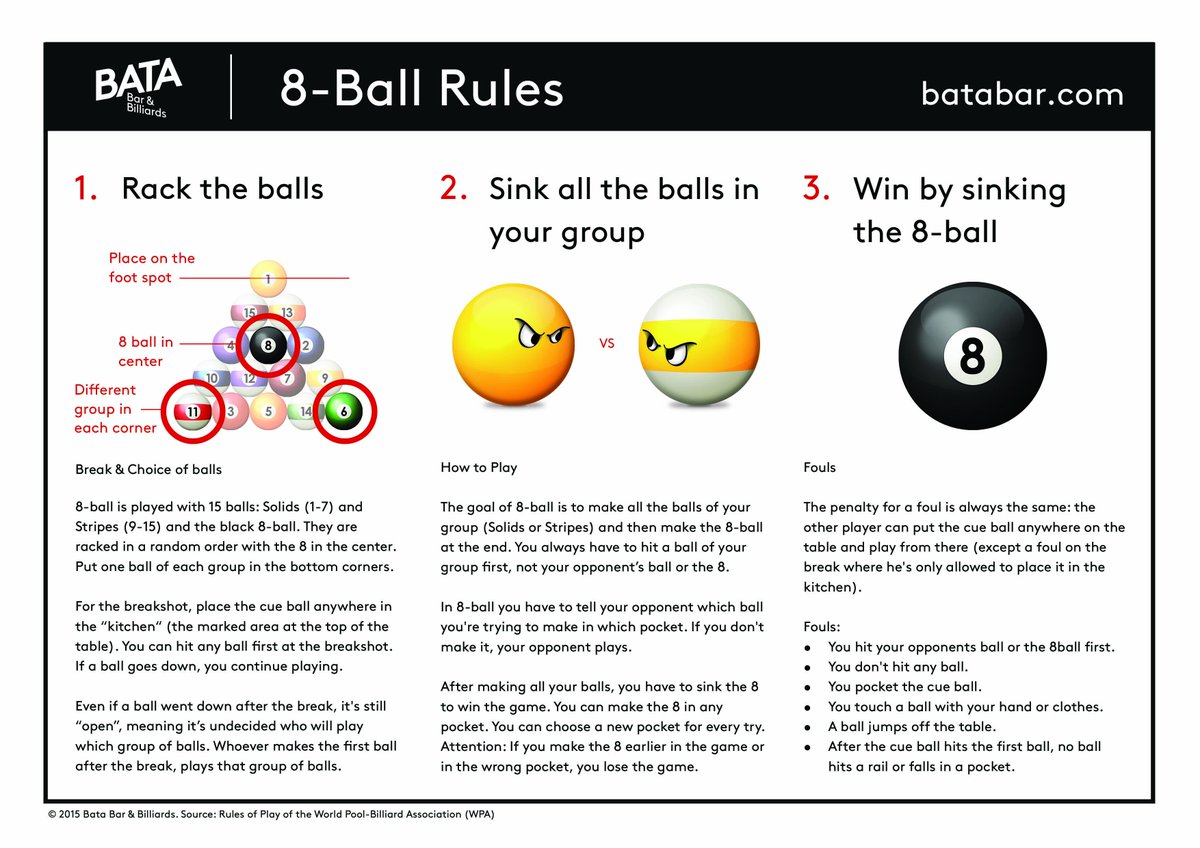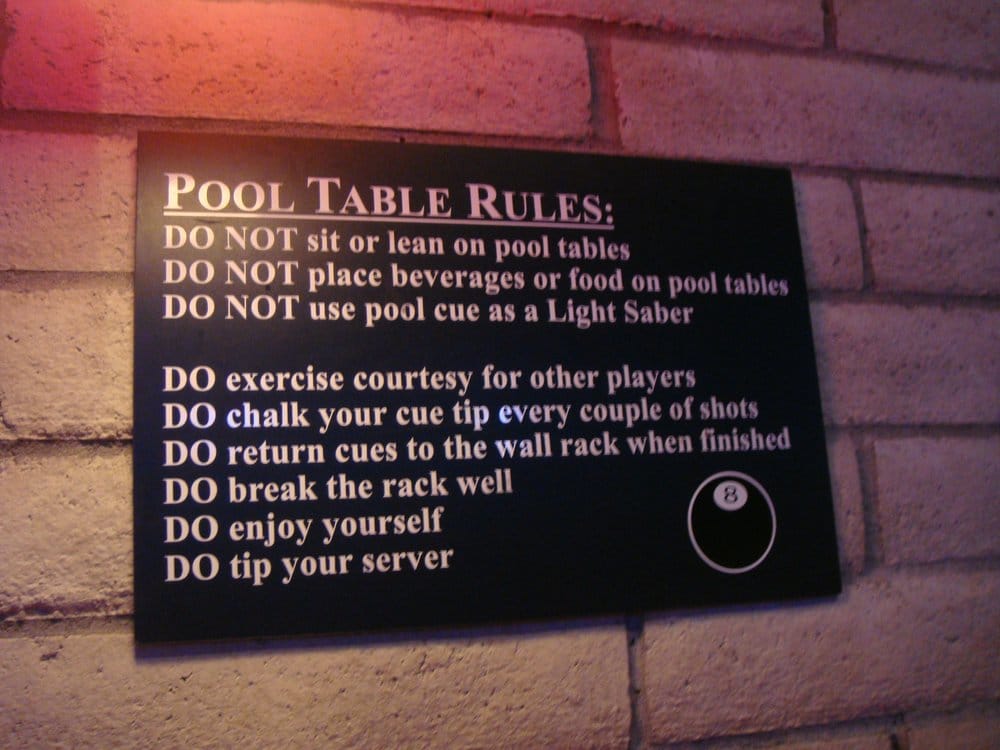

If the player makes a ball of each variation, they may choose which one they prefer.The other player receives the variation they did not claim. If he or she makes a ball into a pocket, he or she claims that type (solid or stripes) for the duration of the game and shoots again. Different people have different preferences for the set up, but make sure the 8-ball is in the middle. Use the triangle to " rack up" the 15 pool balls.Quite clearly, knowing the rules is the only way to win. The cue ball is always solid white, a bit heavier, and should be the only ball directly hit during the game. As for the pool balls, there are evens and odds, solids and stripes, and, most importantly, the 8 ball and the cue ball.If you are playing on a smaller table, you may want a shorter cue. For example, a 7-foot table is 7 feet (2.1 m) long and 3.5 feet (1.1 m) wide X Research source. The Billiard Congress of America defines a "regulation" pool table as any table that is twice as long as it is wide. There are three standard sizes to a pool table: 7, 8, and 9 feet (2.7 m).Tips vary from soft to hard, though inexperienced pool players are best served with a medium to medium-soft tip X Research source.


The tip is the most important part of a cue (it's on the narrow end you'll be hitting with). Most sticks are 58 inches (147 cm) in length, but shorter and longer ones are available. There are generally three things you'll be using: a cue, table, and pool balls.


 0 kommentar(er)
0 kommentar(er)
